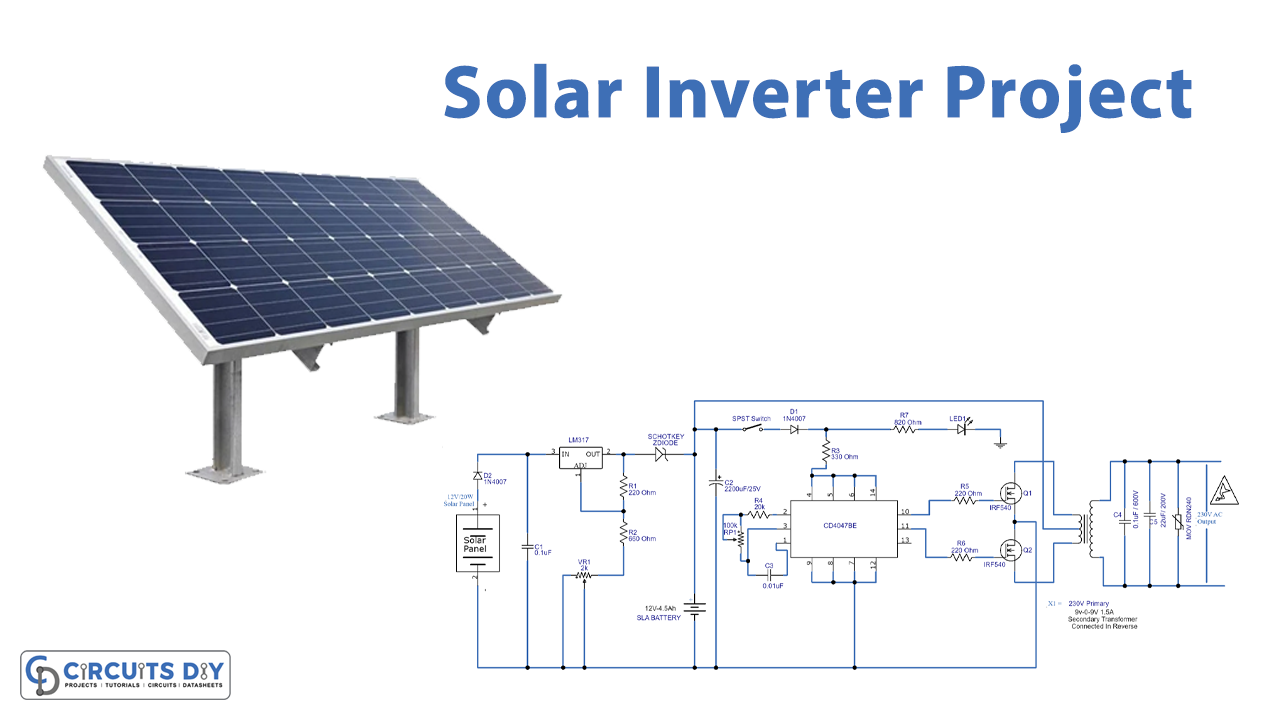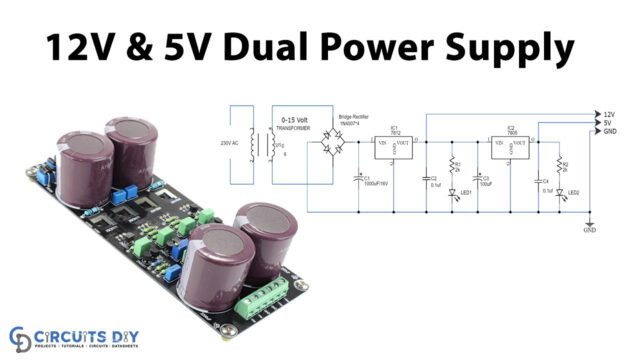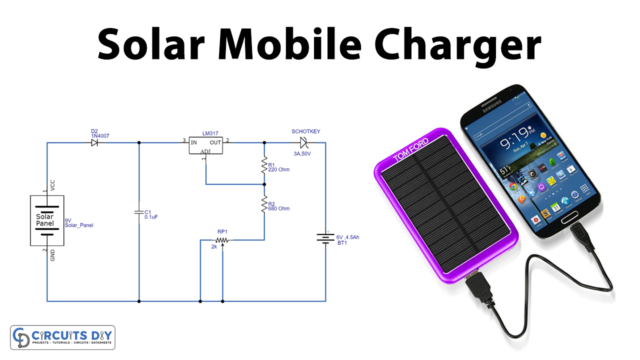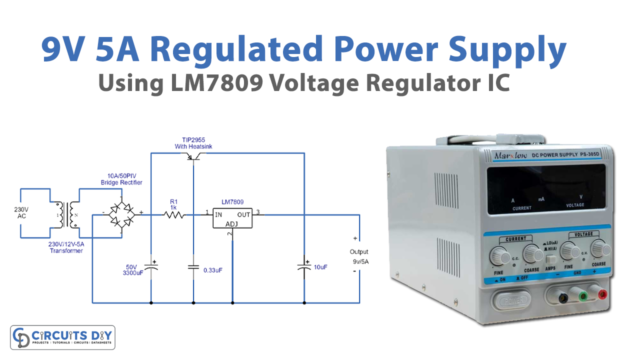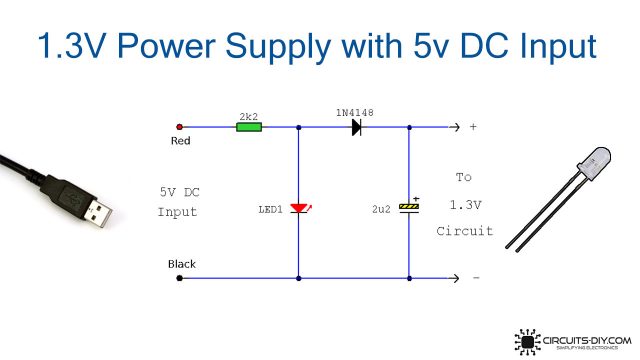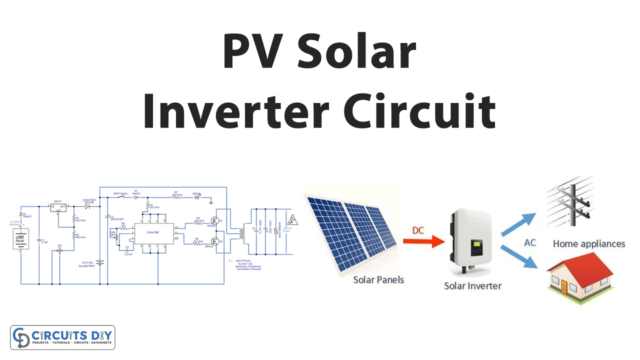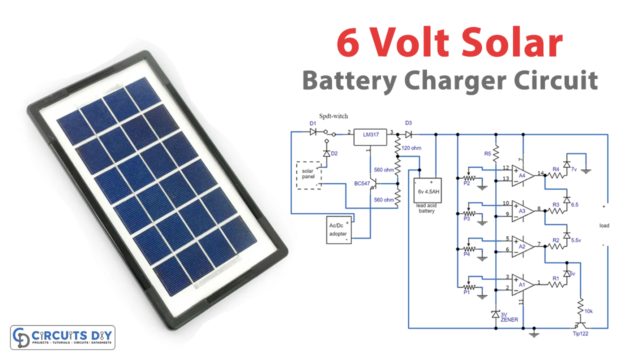The inverter circuit provides an alternating current output (AC) from the power supply battery, but the battery needs to be supplied with a constant DC supply for a charge. The AC input power must provide these circuits, so only the AC output can be accessed from this circuit.
We couldn’t charge the inverter battery when there is no AC supply outlet and get a high voltage output. In this article, the solar inverter circuit Photovoltaic is provided with components that are easily accessible and let us charge the inverter battery without an external AC supply outlet. It can be used as a handheld inverter.

Hardware Components
The following components are required to make Solar Inverter Circuit
| S.no | Component | Value | Qty |
|---|---|---|---|
| 1. | Solar panel | 12V/20W | 1 |
| 2. | IC | CD4047 | 1 |
| 3. | Transformer | – | 1 |
| 4. | MOSFET drivers | – | 1 |
| 5. | Voltage Regulator IC | LM317 | 1 |
| 6. | Switch | – | 1 |
| 7. | Resistor | 220, 330, 680, 820, 20K | 3, 1, 1, 1, 1 |
| 8. | Diode | 1N4007, 3A 50V | 2, 1 |
| 9. | Capacitor | 0.1uF, 0.01uF, 2200uF | 1 |
Solar Inverter Circuit
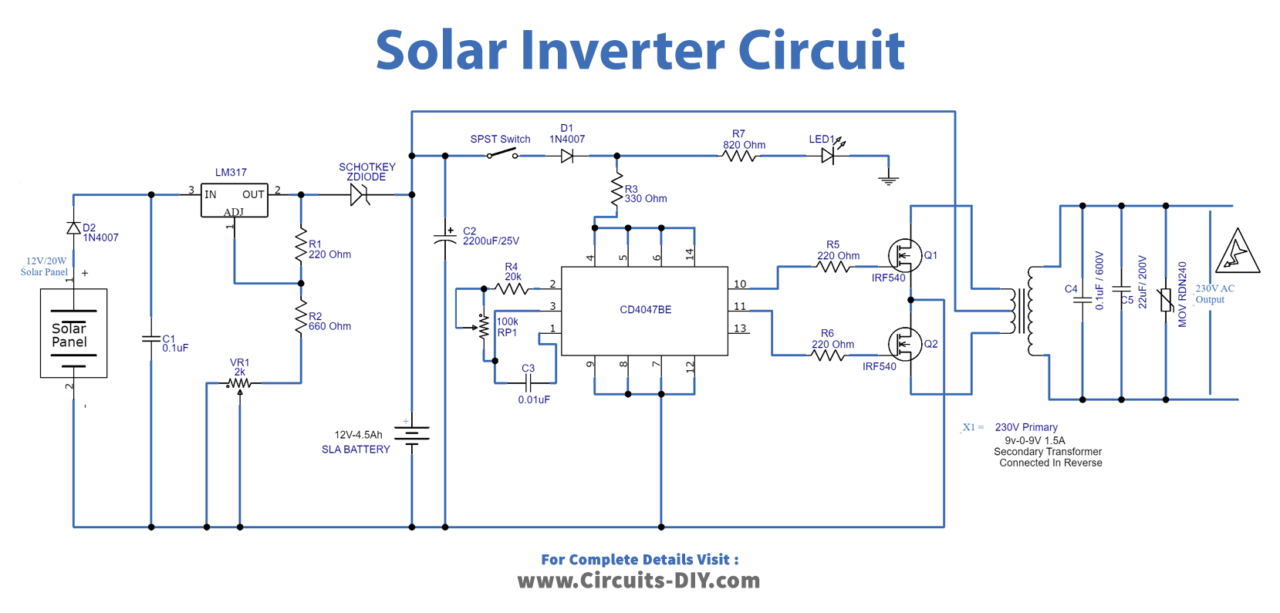
Working Explanation
PV Solar panel:
This 12 Volt/ 20 Watt circuit provides a peek of the solar panel used for input bias when exposed to open sun, with a peak of 12 volts at 1600 mA.
Regulator / Battery Charger:
The three-terminal infinitely adjustable regulator LM317 Positive voltage will give the output voltage range from 1.25 V to 37 V with a current rating of more than 1.5A. 12/4.5Ah SLA Battery provides the final output of the regulator and provides the DC bias to the inverter. The output voltage Vout of Regulator LM317 is available as
Vout = 1.25V x (R2/(R1+1))
R2 => R2+VR1 for the given inverter circuit.
Inverter Circuit using IC CD4047: Monostable / Astable multi-vibrator IC CD4047 is used here to generate switching pulse. This IC operates in low power and is available in 14 pins dual inline package. At Pin 13, 1/2 of oscillation at Pin 10 as Q, and Pin 11 as Q ‘, it provides maximum Oscillation output F. Each output pin has a duty cycle of 50 percent.
f= 1/8.8RC
R => R4+VR2, C=> C3, please see the following. We can get frequency output at pin 13 using this formula—the formula changes to f=1/4.4RC for pins 10 and 11.
MOSFET drivers
IRF540 N Vishay siliconix power MOSFET is used for this inverter circuit as switching drivers. It provides fast switching and a high operating temperature (175ºC).
Output Stage
The main component of the solar inverter is the output stage; here, transformer X1 uses the secondary winding center-tapped transformer reverse with specifications like the 230-V main, 9V-0-9V / 1.5A. The electronic devices connected to the output are secured by the MOV (Metal Oxide Varistor).
The output voltage of the solar panel is directly supplied to the positive regulator circuit of the LM317. It is adjusted to provide a power output of 12 volts and a battery connected by a Schottky diode (3A, 50V).
As we turn on the SPST switch, it begins oscillating, and the CD404 7 IC is connected and configured as a multi-vibrator Astable. Output Q’ and Q’ are directly fed into the secondary MOSFET IRF540 & X1 transformer winding switching power, where the current flow occurs for a particular duration. The voltage/frequency is changed depending on the count of winding and switching frequency output.
Application and Uses
The voltage can be adjusted in AC electricity depending on the system. The solar inverter is used for converting DC to AC only as solar panels produce direct current. An inverter can generate square waves or a sine wave to help run lights, TVs, lights, motors, etc.

